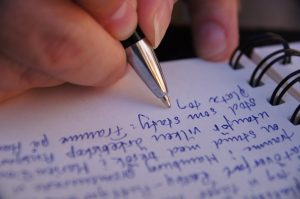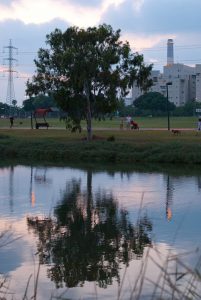In reading about the various types of research, it has been difficult for me to determine where I stand as a researcher. I never thought of myself a researcher because I didn’t realize what I was doing was research. I simply considered myself as only a teacher. However, this article has enlightened me to the fact that I have actually been doing research although at a surface level. I am noticing that as I read more and more research articles I lean towards qualitative research methods specifically because I don’t use quantitative methods of assessment very often within my classroom. Qualitative aligns with my pedagogy because it is a relational approach. Throughout all the research I have read in these last few weeks, I have yet to find one that holistically aligns with who I am as a teacher (and now a researcher).

“value and action” by palooja is licensed under CC BY 2.0
In the book, Action Research in Education Chapter Title “Getting to Grips with Perspectives and Models” Mary McAteer outlines the fundamental difference between the everyday inherent reflection used by educators and the action driven reflection within action research. I have long battled with the idea of teachers being stagnant, rolling out the same lessons year after year. This chapter, has helped me to understand that action-research can help to solve the problems that educators face. Mary McAteer states “…action research is predicated on the concept of a more critically reflective practice, which challenges the teacher to move beyond the ‘normal’ evaluation of practice to more problematising approach; one which raises questions, and seeks alternative perspectives” (McAteer., 2013, p.4). This resonates with me as a researcher because when I research a concept or idea, it will be important to look at conclusions that oppose with my own beliefs. In doing this, I should be able to redefine my perceptions by either strengthening my beliefs or allow me to shift my thinking to ensure I am always seeking best practice.
In thinking about myself as a researcher and what sparks my interest in researching, McAteer provides an important insight that teachers simply “[hope] that they will be taught new and better ways of doing, and can initially find it both frustrating and challenging to be told that there is no quick-fix solution on offer” (McAteer., 2013, p. 5). This as a reader was eye opening, as it highlighted the fact that teachers are so often bogged down in their everyday responsibilities that they want the band-aid solution to the problem. The issue with this concept is that it doesn’t force educators to research a variety of solutions and it also erasers the opportunity for the solution to be meaningful. The irony of this is that educators continually ask their students to dig deep and find connections to what their learning as opposed to providing surface level answers, yet educators might not do this themselves due to time constraints. However, education has a vast amount of areas that require improvement and without the due diligence of teachers to address the issues and inquire for solutions, the education system, along with teaching becomes a linear, ineffective learning space.
McAteer provides a variety of models and schematics to illustrate different ways to view action research. Figure 2.2 is more linear in terms of its representation, Figure 2.1 is simple and aligns more with what I have been taught as a reflective teacher. In using either model, McAteer describes the “cyclic nature of action research, the outcomes of each cycle informing the development of the next” (McAteer., 2013, p. 7). This idea of teaching in a cyclical way is one that I have been grappling with within teaching. For some students and teachers, it appears that learning is simply learn and explain. Whereas I believe that learning is cyclical and interactive in nature. Instead, this chapter has solidified the concept that as a researcher and educator that ideas are never finished, that they can be redefined, challenged, solidified and developed further. After being affirmed by this notion McAteer also brings to light an issue that I struggle and may continue to struggle with at times. The idea of confidence in ones own research. Due to the fact that I currently align more with qualitative research I find the idea of objectivism to be unobtainable. If I am going to conduct research that seeks to identify a problem within my teaching then the use of my own experiences is a key competent to that. I agree with McAteer that, “many teachers base their teaching on experiential learning approaches, and acknowledge the importance of the attitudinal and affective responses of these approaches, it would be difficult to imagine them describing knowledge of and in the classroom as objective, value free and not strongly bound up in the individuals involved” (McAteer., 2013 p. 13).

“No hands up” by warrick1 is licensed under CC BY-ND 2.0




